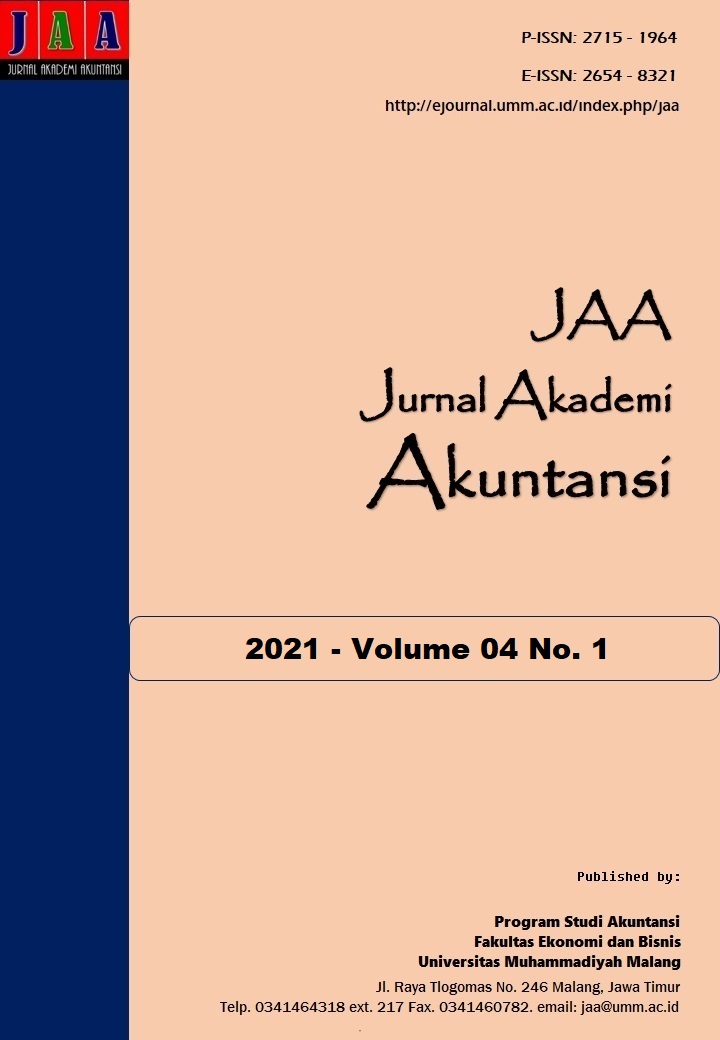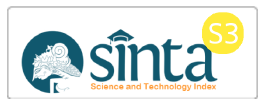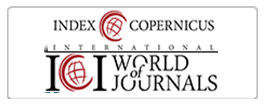PERAN AKUNTABILITAS DAN TRANSPARANSI PEMERINTAH DESA INDONESIA TERHADAP KEPERCAYAAN MASYARAKAT DESA: KASUS DI KABUPATEN BANTUL
DOI:
https://doi.org/10.22219/jaa.v4i1.16481Abstract
This study aims to examine effect of accountability and transparency of village government on village community trust. A Mixed-methods research design with explanatory sequential model was adopted in this study. Data were collected by distributing a survey questionnaire in the first step and followed by interviews. Partial Least Square (PLS) technique was used to test the hypotheses whilst inductive thematic analysis was adopted to analyze interview data. This study discovered that the transparency enhances village community trust while accountability was in contrast. The interview results complement the result obtained from hypotheses testing using survey data. Based on the research findings, the transparency becomes a critical factor for increasing community trust in village.
Downloads
References
Akbar, R., Pilcher, R., & Perrin, B. (2012). Performance measurement in Indonesia: the case of local government. Pacific Accounting Review, 24(3), 262-291.
Alwi, I. (2015). Kriteria empirik dalam menentukan ukuran sampel pada pengujian hipotesis statistika dan analisis butir. Formatif: Jurnal Ilmiah Pendidikan MIPA, 2(2), 140-148.
Bastian, I., Wardani, A. K., & Riyani, E. I. (2014). Akuntansi Kecamatan dan Desa. Jakarta: Penerbit Erlangga.
Braun, V., & Clarke, V. (2006). Using Thematic Analysis in Psychology. Qualitative Research in Psychology, 3(2), 77-101.
Buchanan, B. (1974). Building organizational commitment: The socialization of managers in work organizations. Administrative science quarterly, 533-546.
Certo, S. T. (2003). Influencing initial public offering investors with prestige: Signaling with board structures. Academy of Management Review, 28(3), 432-446.
Chin, W. W. (1998). Commentary: Issues and opinion on structural equation modeling. MIS quarterly, 22(1).
Cohen, J. R., Krishnamoorthy, G., & Wright, A. M. (2008). Form versus substance: The implications for auditing practice and research of alternative perspectives on corporate governance. Auditing: A Journal of Practice & Theory, 27(2), 181-198.
Connelly, B. L., Certo, S. T., Ireland, R. D., & Reutzel, C. R. (2011). Signaling theory: A review and assessment. Journal of Management, 37(1), 39-67.
Creswell, J. W. (2012). Research Design: Qualitative, Quantitative and Mixed Methods Approaches. California: Sage Publication.
Deegan, C. (2006). Legitimacy theory. Methodological issues in accounting research: theories and methods, 161-182.
DiMaggio, P. J., & Powell, W. W. (1991). The new institutionalism in organizational analysis (Vol. 17): University of Chicago Press Chicago, IL.
DiMaggio, P. J., & Powell, W. W. (2000). The iron cage revisited institutional isomorphism and collective rationality in organizational fields Economics meets sociology in strategic management (pp. 143-166): Emerald Group Publishing Limited.
Field, A. (2009). Discovering Statistics Using SPSS. 3rd edn SAGE Publications Limited: London: UK.
Fornell, C., & Larcker, D. F. (1981). Evaluating structural equation models with unobservable variables and measurement error. Journal of marketing research, 18(1), 39-50.
Gefen, D., & Straub, D. (2005). A practical guide to factorial validity using PLS-Graph: Tutorial and annotated example. Communications of the Association for Information Systems, 16(1), 5.
Ghozali, I. (2008). Structural equation modeling: Alternative Metodh with Partial Least Square (PLS). Semarang: Badan Penerbit Universitas Diponegoro.
Grimmelikhuijsen, S., & Klijn, A. (2015). The effects of judicial transparency on public trust:
evidence from a field experiment. Public Administration, 93(4), 995-1011.
Gudono. (2014). Teori Organisasi. Yogyakarta: BPFE Yogyakarta.
Hair, J., Anderson, R. E., Tatham, R., & Black, W. (1995). Multivariate data analysis . Saddle River: NJ: Prentice Hall.
Hair, J. F., Black, W. C., Babin, B. J., Anderson, R. E., & Tatham, R. L. (2006). Multivariate data analysis (Vol. 6): Upper Saddle River, NJ: Pearson Prentice Hall.
Hair, J. F., Sarstedt, M., Hopkins, L., & Kuppelwieser, V. G. (2014). Partial least squares structural equation modeling (PLS-SEM) An emerging tool in business research. European Business Review, 26(2), 106-121.
Halim, A., & Kusufi, S. (2012). Public Sector Accounting: theory, concept and application. Jakarta: Salemba Empat.
Hall, M. (2008). The effect of comprehensive performance measurement systems on role clarity, psychological empowerment and managerial performance. Accounting, organizations and society, 33(2-3), 141-163.
Hartono, J., & Abdillah, W. (2011). Concept and Application of PLS (Partial Least Square) for Empirical Research. Yogyakarta: BPFE Yogyakarta.
Henseler, J., Ringle, C. M., & Sinkovics, R. R. (2009). The use of partial least squares path modeling in international marketing New challenges to international marketing (pp. 277-319): Emerald Group Publishing Limited.
Ittner, C. D., Larcker, D. F., & Meyer, M. W. (2003). Subjectivity and the weighting of performance measures: Evidence from a balanced scorecard. The Accounting Review, 78(3), 725-758.
Kosnik, R. D. (1987). Greenmail: A study of board performance in corporate governance. Administrative science quarterly, 32(2), 163-185.
Kristiansen, S., Dwiyanto, A., Pramusinto, A., & Putranto, E. A. (2009). Public sector reforms and financial transparency: Experiences from Indonesian districts. Contemporary Southeast Asia, 64-87.
Lander, G. H., & Auger, K. A. (2008). The need for transparency in financial reporting: Implications of off-balance-sheet financing and inferences for the future. Journal of Accounting & Organizational Change, 4(1), 27-46.
Lestari, A. K. D., Atmadja, A. T., & Adiputra, I. M. P. (2014). Dissecting an Accountability of Financial Management Practices in Pakraman Kubutambah Village, Kubutambah District, Buleleng Regency, Bali Province. Jurnal Ilmiah Mahasiswa Akuntansi, 2(1), 1-12.
Mada, S., Kalangi, L., & Gamaliel, H. (2017). Pengaruh Kompetensi Aparat Pengelola Dana Desa, Komitmen Organisasi Pemerintah Desa, dan Partisipasi Masyarakat Terhadap Akuntabilitas Pengelolaan Dana Desa Di Kabupaten Gorontalo. Jurnal Riset Akuntansi Dan Auditing "Goodwill", 8(2).
Mardiasmo. (2002). Public Sector Accounting. Yoyakarta: Andi Offiset.
Munti, F., & Fahlevi, H. (2017). Determinan Kinerja Pengelolaan Keuangan Desa: Studi Pada Kecamatan Gandapura Kabupaten Bireuen Aceh. Journal of Accounting and Investment, 18(2), 172-182.
Nguyen, T. T., & Van Dijk, M. A. (2012). Corruption, growth, and governance: Private vs. state-owned firms in Vietnam. Journal of Banking & Finance, 36(11), 2935-2948.
Nurrizkiana, B., Handayani, L., & Widiastuty, E. (2017). Determinants of Transparency and Accountability of Regional Financial Management and Its Implications to Trust of Public-Stakeholders. Journal of Accounting and Investment, 18(1), 28-47.
Ringle, C. M., Wende, S., & Becker, J.-M. (2015). SmartPLS 3. Boenningstedt: SmartPLS GmbH, http://www. smartpls. com.
Sholihin, M., & Ratmono, D. (2013). Analisis SEM-PLS dengan WarpPLS 3.0 untuk Hubungan Nonlinier dalam Penelitian Sosial dan Bisnis. Yogyakarta: Penerbit ANDI.
Sofyani, H. (2018). Does Performance-Based Budgeting Have a Correlation with Performance Measurement System? Evidence from Local Government in Indonesia. Foundations of Management, 10(1), 163-176.
Sofyani, H., Akbar, R., & Ferrer, R. C. (2018). 20 Years of Performance Measurement System (PMS) Implementation in Indonesian Local Governments: Why is Their Performance Still Poor?. Asian Journal of Business and Accounting, 11(1), 151-227.
Sofyani, H., Riyadh, H. A., & Fahlevi, H. (2020). Improving service quality, accountability and transparency of local government: The intervening role of information technology governance. Cogent Business & Management, 7(1), 1735690.
Sofyani, H., Suryanto, R., Wibowo, S. A., & Widiastuti, H. (2018). Management and Governance Practices in Dlingo Village in Bantul Regency: Learning from the Pilot Village. Jati: Jurnal Akuntansi Terapan Indonesia, 1(1), 1-16.
Tambulasi, R. I. (2009). All that glisters is not gold: new public management and corruption in Malawi's local governance. Development Southern Africa, 26(2), 173-188.
Tolbert, C. J., & Mossberger, K. (2006). The effects of e‐government on trust and confidence in government. Public administration review, 66(3), 354-369.
Triyono, T., Achyani, F., & Arfiansyah, M. A. (2019). The Determinant Accountability of Village Funds Management (Study in The Villages in Wonogiri District). Riset Akuntansi dan Keuangan Indonesia, 4(2), 118-135.
Tsang, S., Burnett, M., Hills, P., & Welford, R. (2009). Trust, public participation and environmental governance in Hong Kong. Environmental Policy and Governance, 19(2), 99-114.
Tschannen-Moran, M., & Hoy, A. W. (2001). Teacher efficacy: Capturing an elusive construct. Teaching and teacher education, 17(7), 783-805.
Wijayanti, A. W., Muluk, M. R. K., & Nurpratiwi, R. (2012). Perencanaan Anggaran Berbasis Kinerja di Kabupaten Pasuruan. WACANA, Jurnal Sosial dan Humaniora, 15(3), 10-17.
Downloads
Published
Issue
Section
License
Copyright (c) 2021 Hafiez Sofyani, Afrizal Tahar

This work is licensed under a Creative Commons Attribution-NonCommercial-ShareAlike 4.0 International License.
Jurnal Akademi Akuntansi is licensed under a Creative Commons Attribution-NonCommercial-ShareAlike 4.0 International License.
Authors who publish with this journal agree to the following terms:
- Authors retain copyright and grant the journal right of first publication with the work simultaneously licensed under a Creative Commons Attribution-NonCommercial-ShareAlike 4.0 International License that allows others to share the work with an acknowledgment of the work's authorship and initial publication in this journal.
- Authors are able to enter into separate, additional contractual arrangements for the non-exclusive distribution of the journal's published version of the work (e.g., post it to an institutional repository or publish it in a book), with an acknowledgment of its initial publication in this journal.
- Authors are permitted and encouraged to post their work online (e.g., in institutional repositories or on their website) prior to and during the submission process, as it can lead to productive exchanges, as well as earlier and greater citation of published work (See The Effect of Open Access).
Jurnal Akademi Akuntansi dilisensikan di bawah lisensi Creative Commons Attribution-NonCommercial-ShareAlike 4.0 International.
Penulis yang menerbitkan artikel di jurnal ini menyetujui ketentuan berikut:
- Penulis mempertahankan hak cipta dan memberikan hak jurnal atas publikasi pertama dengan karya yang secara serentak dilisensikan di bawah Lisensi Pengaitan Creative Commons yang memungkinkan orang lain untuk berbagi karya dengan pengakuan atas karya penulis dan publikasi awal dalam jurnal ini.
- Penulis dapat masuk ke dalam pengaturan kontrak tambahan yang terpisah untuk distribusi non-eksklusif versi karya jurnal yang diterbitkan (misalnya, mempostingnya ke repositori institusional atau mempublikasikannya dalam sebuah buku), dengan pengakuan publikasi awalnya di jurnal ini.
- Penulis diizinkan dan didorong untuk memposting pekerjaan mereka secara online (misalnya, di repositori institusional atau di situs web mereka) sebelum dan selama proses pengajuan, karena dapat mengarah pada pertukaran produktif, serta kutipan pekerjaan sebelumnya dan yang lebih besar (Lihat Pengaruh Akses Terbuka).
























